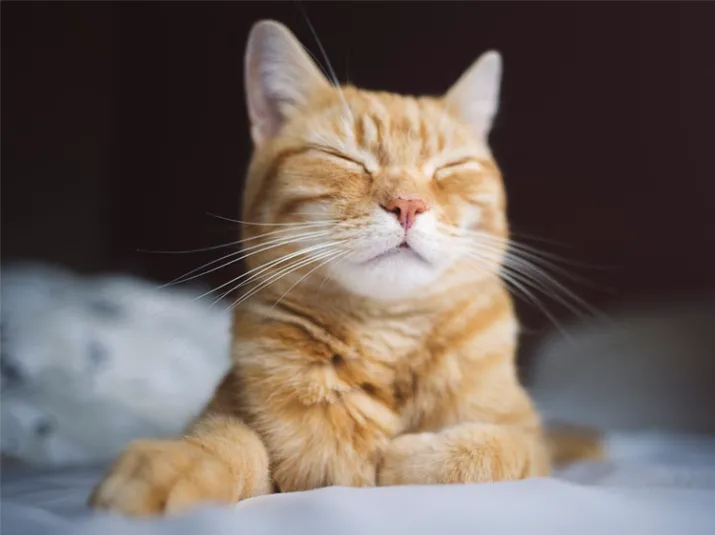In the vibrant world of our beloved pets, cats and dogs, the art of navigation takes on fascinating dimensions. While humans primarily rely on sight, our furry companions navigate through life utilizing a combination of their senses, with whiskers and sniffing playing pivotal roles. These natural abilities are not only crucial for their survival instincts but also contribute to their overall well-being.
In this post, we delve into the intricate ways cats and dogs employ whiskers and sniffing to understand and interact with their surroundings. Additionally, we’ll touch upon the importance of acquiring pet supplies from reputable sources, a topic vital for ensuring the health and happiness of our four-legged friends.
Whiskers: The Tactile Navigators
Whiskers’ Anatomy and Function
Cat whiskers, scientifically known as vibrissae, are specialized hairs deeply rooted in the feline’s body. Positioned in groups on either side of the nose, above the eyes, and on the back of the forelegs, these extraordinary sensors are finely tuned to detect even the slightest changes in the air. Dogs, though lacking the intricate sensitivity of cats’ whiskers, have their own set of facial whiskers that contribute to their sensory toolkit.
The primary function of whiskers is tactile perception. Cats and dogs utilize these sensitive hairs to measure openings, navigate in low-light conditions, and gauge the size and shape of nearby objects. The whiskers are so finely attuned that they can even detect air currents, helping animals sense approaching objects or predators in their environment.
Whiskers in Action
Next time you observe your cat or dog carefully moving through tight spaces or approaching an unfamiliar object, take note of their whiskers in action. As they move, the whiskers sweep forward and sideways, creating a three-dimensional map of their surroundings. This tactile navigation not only aids in preventing collisions but also enhances their spatial awareness.
Sniffing: The Olfactory Symphony
While whiskers offer an intricate tactile experience, the olfactory sense, or the sense of smell, reigns supreme in the world of our pets. The noses of both cats and dogs are equipped with an impressive number of scent receptors, far surpassing the olfactory capabilities of humans. In fact, dogs, with their incredible olfactory prowess, are often employed in various roles such as search and rescue, drug detection, and even medical diagnosis.
Cats, although not as renowned for their sense of smell as dogs, still possess a highly developed olfactory system. Their keen sense of smell aids in hunting, communication, and identifying potential threats or allies in their territory.
Interpreting the World Through Scents
For cats and dogs, sniffing is not just a casual behavior but a fundamental way of interpreting the world. When your cat sniffs the air or your dog eagerly explores a new area, they are engaging in a sensory experience that goes beyond our human understanding. Dogs, in particular, have a specialized structure called the vomeronasal organ, or Jacobson’s organ, which allows them to detect pheromones and other chemical signals.
Sniffing is a vital form of communication among animals, conveying information about their surroundings, other creatures, and even their own emotional state. By sniffing, pets create a scent map of their environment, marking territories, and identifying familiar or unfamiliar scents.
The Importance of Reputable Pet Supplies
As responsible pet owners, understanding and catering to our pets’ unique sensory needs is only part of the equation. Providing them with the right pet supplies is equally crucial for their well-being. Pet stores play a pivotal role in this regard, offering a wide range of products designed to meet the specific requirements of cats and dogs.
Quality Nutrition for Optimal Health
A reputable pet store is the go-to source for high-quality pet food that caters to the nutritional needs of our furry friends. Cats and dogs require a balanced diet to maintain their overall health, and choosing premium pet food ensures they receive the necessary nutrients for vitality and longevity.
Comfortable Living Spaces
From cozy beds to engaging toys, a well-equipped pet store provides a variety of products to enhance the comfort and happiness of our pets at home. Understanding their natural behaviors, such as a cat’s love for climbing or a dog’s need for mental stimulation, allows us to create environments that cater to their instincts.
Health and Grooming Essentials
Regular grooming is essential for the health of both cats and dogs. Reputable pet stores offer a selection of grooming tools and products to keep our pets clean and well-maintained. From brushes and shampoos to dental care items, these supplies contribute to the overall well-being of our furry companions.
Safety and Identification
Ensuring the safety of our pets is paramount. Pet stores provide a range of products, including collars, harnesses, and identification tags, to keep cats and dogs secure during outdoor activities. Microchipping, another essential aspect of pet safety, is often available at reputable pet stores, offering an added layer of protection in case a pet gets lost.
Conclusion
In the intricate tapestry of a cat’s whiskers and a dog’s sniffing prowess, we find a mesmerizing fusion of nature’s design. Understanding and appreciating these sensory gifts enrich our connection with our pets and allow us to create environments that cater to their unique needs. As responsible pet owners, it is our duty to ensure that the pet supplies we provide come from reputable sources, guaranteeing the health, safety, and happiness of our beloved companions. So, the next time you step into a pet store, consider it not just a shopping expedition but a commitment to the well-being of those who navigate their world with whiskers and a keen sense of smell.


